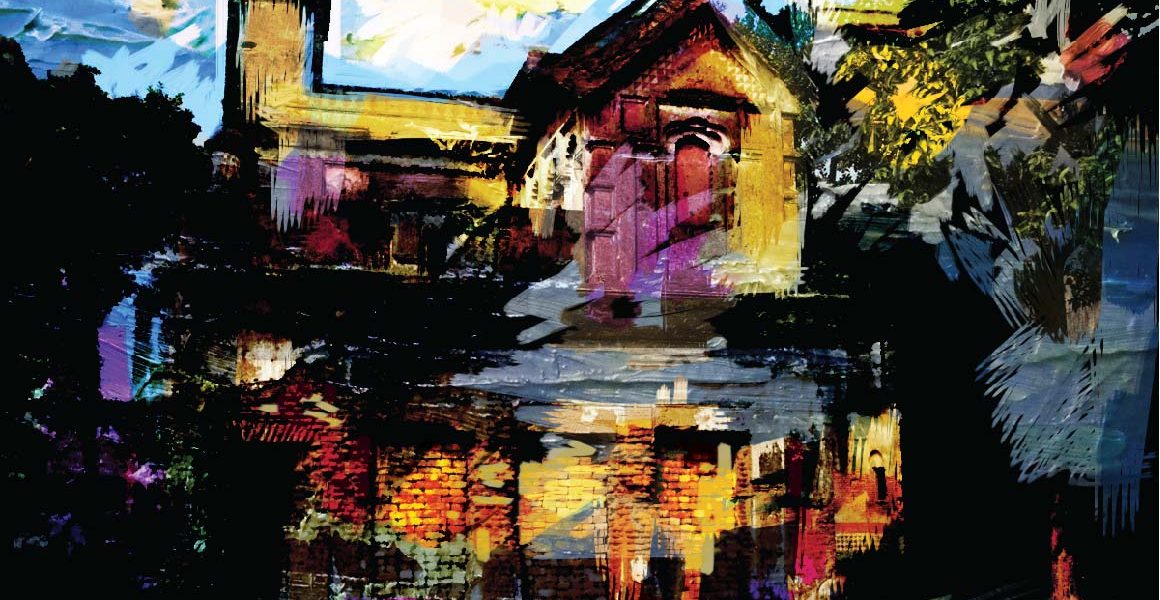Badruzzahan Ahmed invites you to re-discover the ancient capital of Bengal Digital Painting: Jason Sabbir Dhali
Sonargaon was once a thriving city of historic and administrative importance. Situated at Narayanganj, it is believed that this city was once banked at the confluence of the old course of River Brahmaputra and Meghna. Historians have established that this four hundred year old city’s origins to be as old as the pre-Sultanate period, but Sonargaon attained its true prominence in the 12th century when it served as the capital under the fearless Isa Khan, Sultan Fakruddin Mubarak Shah and the Baro Bhuiyan Confederacy. Had the successive rulers, the legendary Mughals not shifted the capital from Sonargaon to Dhaka in the 1608, the history of the very capital that we live in today could have been entirely different. Sonargaon continued to flourish far into the British Colonial rule well into the 19th century, eventually yearning fame far and wide for its world acclaimed fabrics, the Muslin. Once part of the famous Silk Route, it is thus no wonder that Sonargaon survives in the accounts of historic travelers such as Ibn Battuta, Ralph Fitch, Niccolo de Conti among many others who visited Sonargaon from far and wide. What survives of this glorious city is capable of transporting visitors back into time. Existing today along the Dhaka-Chittagong highway, the remains of the old capital is a pleasant two-hour ride away from Dhaka, making it ideal for a day trip. Even though the must-see itinerary would include the Sonargaon Folk Arts Museum, Panam Nagar and the Choto Sardar Bari, the locality is abundant with disconnected archaeological sites such as the Goaldi Mosque, Sonakanda Fort and the Tomb of Sultan Ghiyasuddin Azam Shah among others.
The Sonargaon Folk Art and Crafts Museum “Lok Shilpa Jadughar” Established in 1975 through the initiative of Shilpacharya Zainul Abedin; the museum is housed in a 19th century zamindar (landlord) house- Baro Sardar Bari. Adorned in mosaic art work and intricate façade decorations, this magnificent palace takes visitors through a series of maze-like exhibit spaces, abruptly culminating at a pleasantly surprising central courtyard. Unfortunately, the same cannot be said about the ill-fitting red bricked addition that houses equally important exhibits. It is almost impossible for visitors to miss out on the two slightly disproportionate colonial-period statues of the horsemen and the well known sculpture of two bullocks and their master at work inspired by Zainul Abedin’s famous painting, The Struggle. Panam Nagar – the deserted ghost-town of Sonargaon Conveniently located just a ten-minute walk away from the Folk Arts and Crafts Museum is the eerily abandoned Panam Nagar. Containing a set of fifty-two abandoned street-front houses once owned by rich Hindu fabric-merchant families, what takes visitors by surprise here is the grandeur that is displayed on the facades of the houses. Inspired by Indo-European influences, a truly adventurous traveler could spend hours here being engrossed in the details and the secrets that Panam Nagar seems to whisper. Panam Nagar is best experienced on foot. The houses are inaccessible by law but one can peek inside the houses to discover the hauntingly beautiful naachghars (covered double-height halls). These stunningly decorated halls in ruins still seem to echo the rhythm of dancers that must have once glorified these halls.
The Panam Nagar Street terminates with the Choto Sardar Bari, another almost palatial house of an unknown period. Also, significant enough to visit is the Painam Pool, a Mughal bridge across the defensive moat of Panam Nagar, the Pankhiraj Canal. A fifteen-minute rickshaw ride would take visitors to the Goaldi Mosque, one of the only few medieval monuments still surviving in Sonargaon. Cities from the past often leaves us with greatest mementos in the form of bricks and stones, and luckily for us, what remains of Sonargaon might have spoken to us about the grandeur and richness that Bengal had once possessed. The ancient capital of Bengal and Dhaka’s predecessor still stands today, for us to take a journey back in time.




